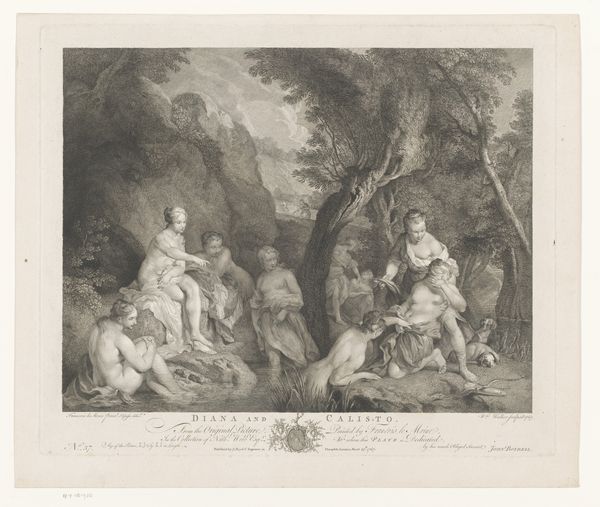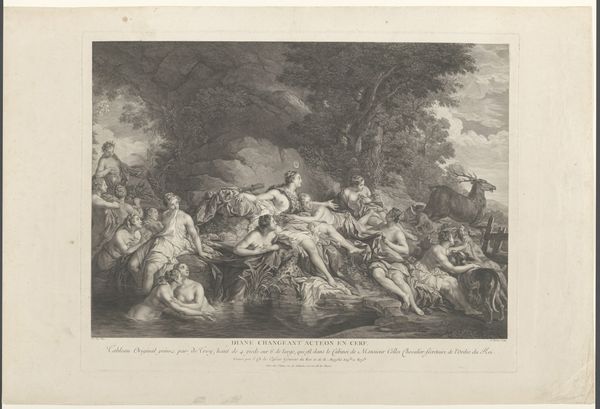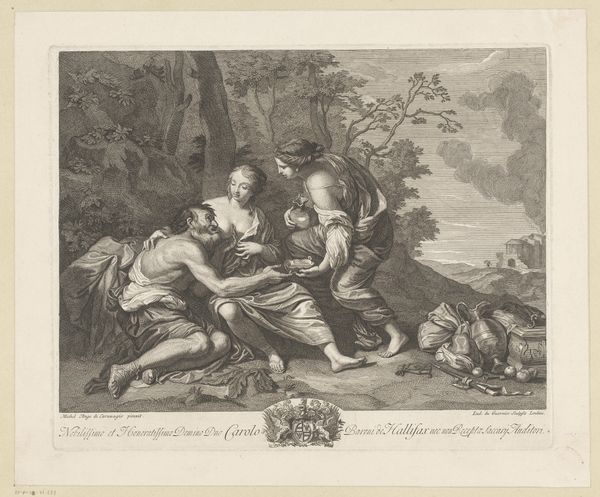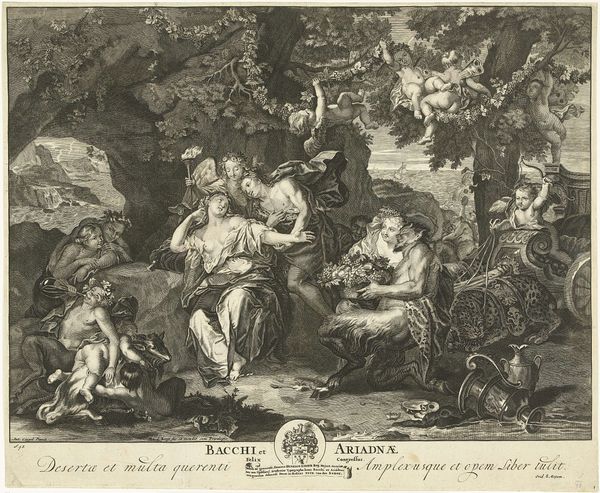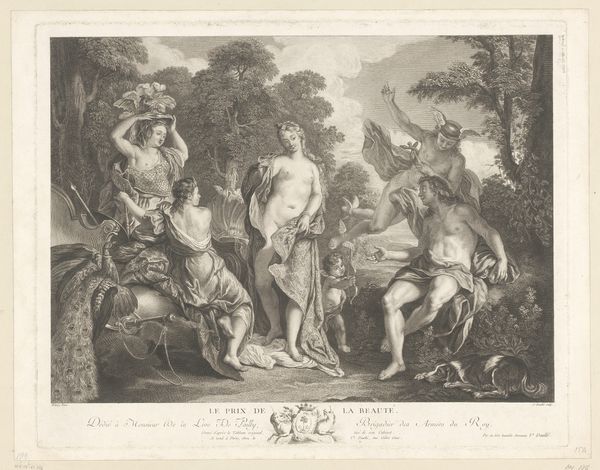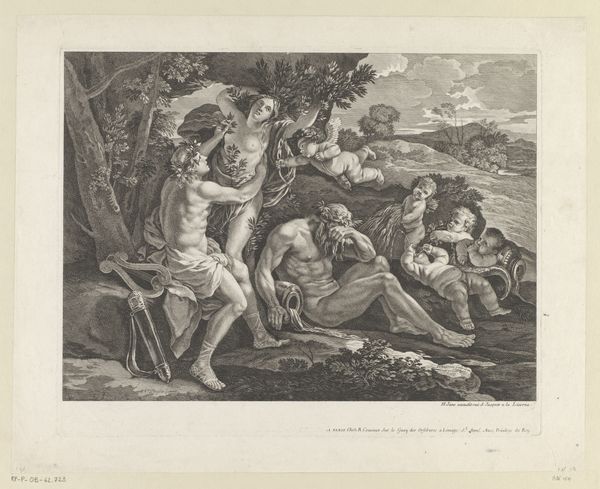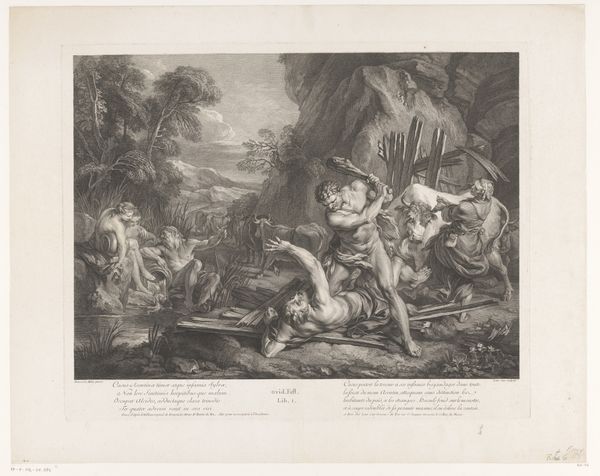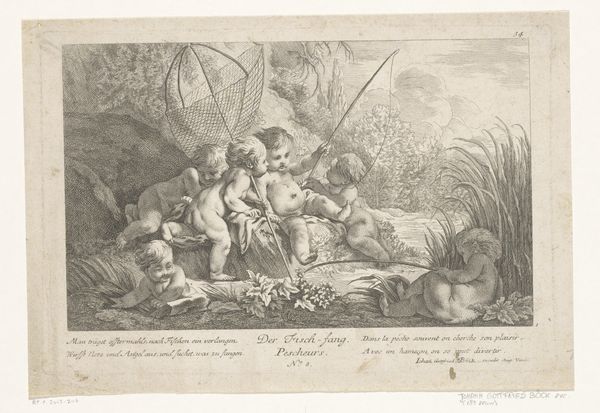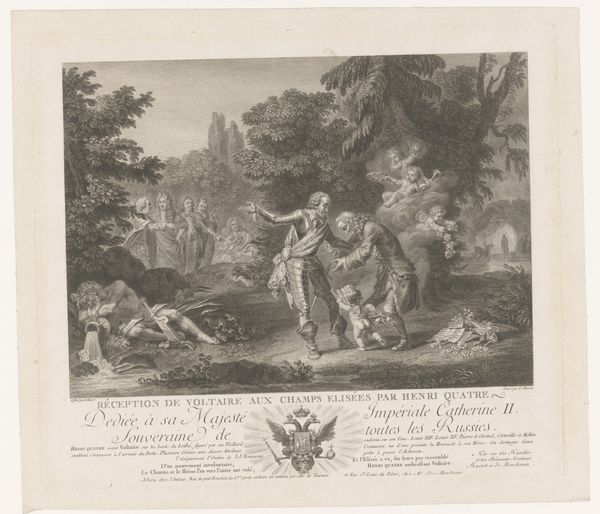
engraving
#
allegory
#
baroque
#
old engraving style
#
landscape
#
classical-realism
#
figuration
#
old-timey
#
19th century
#
line
#
history-painting
#
engraving
Dimensions: height 369 mm, width 460 mm
Copyright: Rijks Museum: Open Domain
Claude Duflos made this print, "Bacchus and Ariadne," sometime between the late 17th and early 18th centuries, using a technique called engraving. This is an intaglio printmaking process, in which lines are incised into a metal plate, which is then inked and printed. The material qualities of an engraving are striking: think of the sharp, precise lines and the fine details that Duflos was able to achieve. The process demands a deliberate hand, using tools like burins or gravers to carve the image into the metal. This isn't a quick or spontaneous technique. It requires planning, skill, and labor, all of which are embedded in the final print. Engraving was also a crucial medium for disseminating images and ideas, making it a powerful tool in a pre-digital age. This print, like many others, helped to circulate classical themes and stories, shaping cultural tastes and knowledge. So when we look at this print, we're seeing not just a mythological scene, but also the imprint of labor, the circulation of ideas, and the craft of engraving itself.
Comments
No comments
Be the first to comment and join the conversation on the ultimate creative platform.
